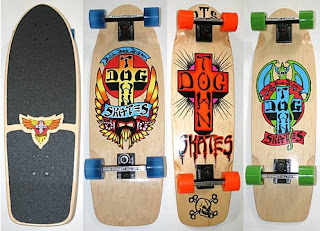Looking for some reasons for picking up skateboarding? Whether you need to convince your parents that skateboarding is a respectable and valuable activity, or a parent trying to convince your kid to pick up a skateboard, or if you are just thinking about skateboarding but want to know if the pain is worth it - here are the top 6 reasons to give skateboarding a shot.
1. Skateboard to Try Something New
If you haven't given skateboarding a shot, and you are looking for something to challenge yourself with, then skateboarding is a perfect choice. It's unique, and while skateboarding has grown a ton in popularity over the last few years, there are still piles of people out there who haven't tried it. Skateboarding will challenge you in new ways and teach you a new skill set. Trying new things and gaining new experiences is what keeps your brain alive and active, which in turn gives you new insights into the world and makes you a better, more interesting person!
2. Skateboard for Fitness
This might seem weird at first, because of the dangers that go along with skateboarding. It's true, sometimes you will fall and scrape your knee or elbow. But, skateboarding trains your body in unique ways. A huge part of skateboarding is balance, so your core will gain strength as you skate. Plus, your legs will get a good workout as well. Skateboarding is also very aerobic, and you can easily work up a sweat while skating. It's pretty easy to loose weight when you are out pumping your board around all afternoon. If you really dig into skateboarding, you'll end up lean and tough.
3. Skateboard to Make Friends
This is true no matter your age. If you are a teenager, then there should be groups of skaters at school, and if you choose to skate, you should have several groups of instant friends if you want. Now, teenagers can be weird and mean, so who knows how that will work out, but picking a hobby other than watching TV on your couch will always make it easier to make friends. You'll be more interesting. This works for adults, too. Plus, it's easy to run into people at skateparks and make friends, or you can check at your local skate shop for local groups and clubs.
4. Skateboarding Teaches Perseverance
Sometimes you learn a trick one day, and then the next day you just can't land it. Sometimes you're doing great, and suddenly you find yourself smashing into the pavement and it hurts. Sometimes you practice the same trick for a month - or several months - and you just can't seem to get it. But you stick with it. You keep trying. You lean the value of staying with something, even when it's not easy, even when people make fun of you or don't understand you, and even when you have no one pushing you but yourself. Life is tough, and learning to push through because the payoff is worth it will help in every way.
5. Skateboard to Build Confidence
When you've been practicing a trick for a long, long time, and you finally get it, you realize something. You realize that you can do something that only a small handful of people on the planet can even do. You learn that if you try hard, you can defy gravity. So you move on to a harder trick, and then a harder one yet. You start to learn that you can skate, no matter what other people say. Sometimes this gets tied into rebellion and breaking the law, but it's also building confidence, which is key to success. It sounds cheesy, but believing in yourself and understanding how powerful you really are is important!
6. Skateboard for Fun!
All of these other reasons are good, and if you add them up by themselves you can see that there are plenty of reasons to skateboard. But, the great news is that skateboarding is also fun! And not fun like playing a video game is fun - skateboarding is that deep kind of fun that gets down into your gut. Maybe it's because of all of these other reasons chipping in, plus learning and landing a new trick, feeling the burn and the wind as you fly down the sidewalk, the click-clack sounds and crack of the tail as you olly, the pull of gravity and you bend your knees and push up a ramp or around a corner - skating rocks


